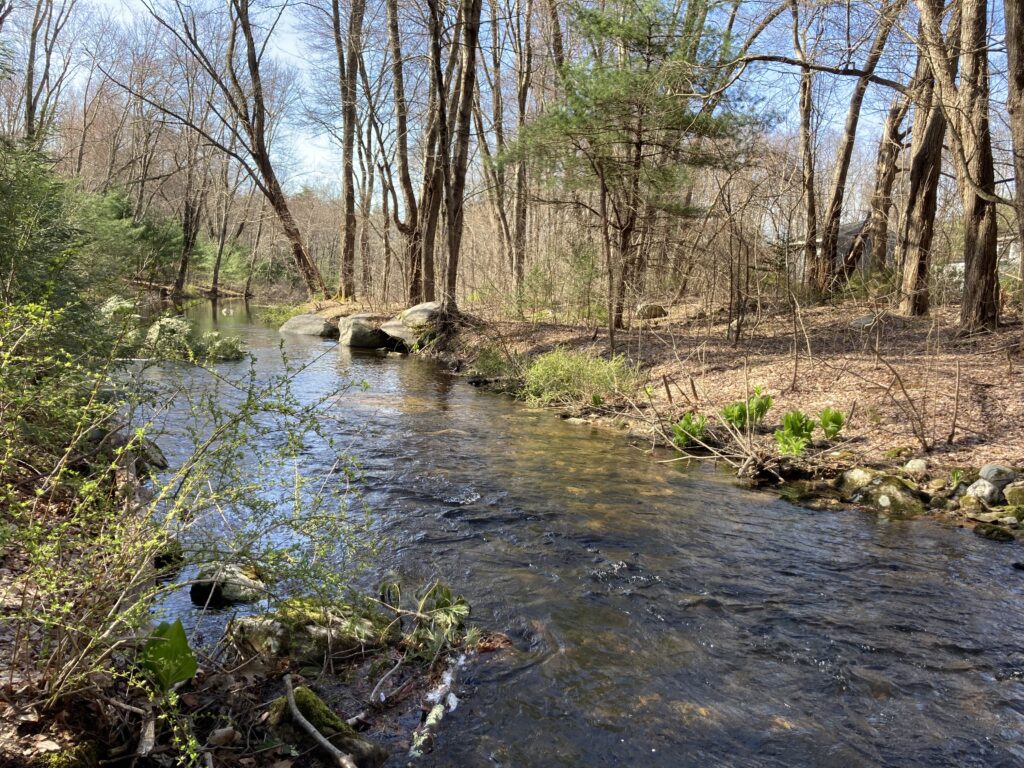This property is acquired for the water supply protection pursuant to Massachusetts General Laws Chapter 40, sections 39, 41 and 15B and article 97 of the amendments of the Massachusetts Constitution and is under control pf the Springfield Water and Sewer commission and will remain in a natural, scenic and open condition for the purpose of wildlife conservation, forest health and drinking water supply protection.

Acreage
The Sicard Conservation Area is 4.52 acres.
Parking/Access
Sicard Conservation Area is accessible via Allen Street in Belchertown. There is a 2-car pull-off just after the bridge over Jabish Brook.
History
The property was purchased from the Sicard family in 2001.
Permitted Recreational Activities
- Hiking
- Cross country skiing and snowshoeing
- Snow vehicles usage with written authorization from the commission
- Non-commercial hunting
- Plant and wildlife observation
Prohibited Recreational Activities
- Campfires, open fires, cookouts pr picnics
- Camping
- Mountain biking
- Filling, storing, placing or dumping of any kind
- Intentional introduction of a non-native plant, animal or insect
- Activities detrimental to drainage, flood control, water conservation, water quality, erosion, etc.
- Domestic animals or livestock
- Drunkenness, breach of peace, profanity, disorderly conduct
- Vandalism
- Construction of any object or structure
- Swimming or wading
- Fishing
- Organized sport activities, including but not limited to orienteering, road races, etc.
- Public assemblies or groups of more than 10 persons unless with written authorization from the commission
- Motorized vehicles of any kind
- Boats, of any kind, with or without motors
- metal detectors or the use of similar devices
Notable Features
Sicard Conservation Area is covered primarily by wetlands. Jabish Brook bisects the property before crossing beneath Allen Street. There is an active beaver population here – you can find chewed trees in the wetlands, and a large dam across the brook. In March, you can see clusters of skunk cabbage blooming on the eastern side of the brook.